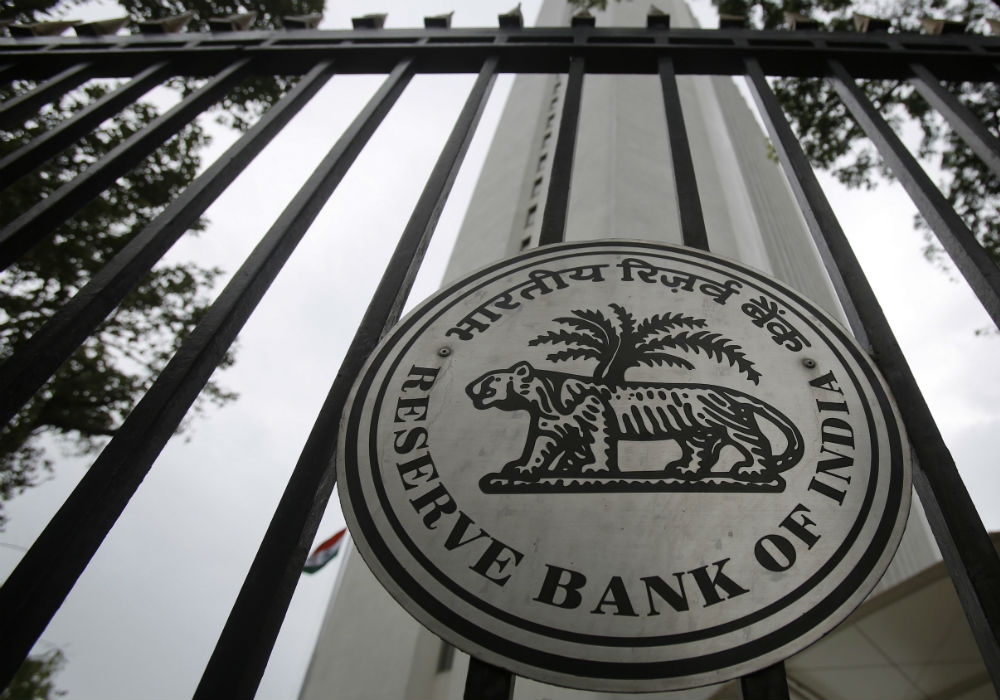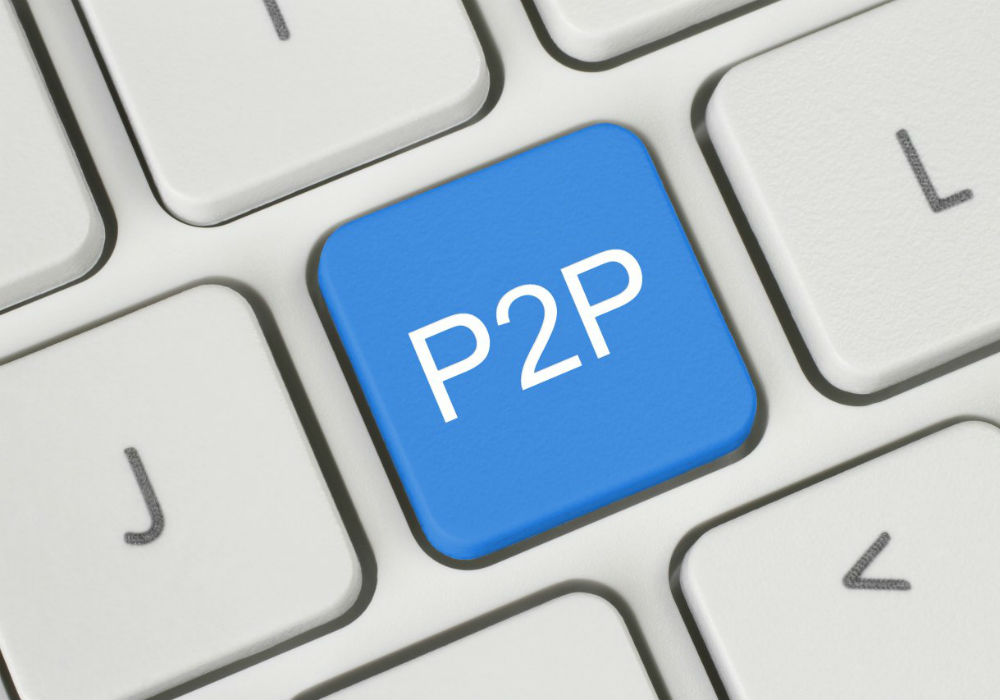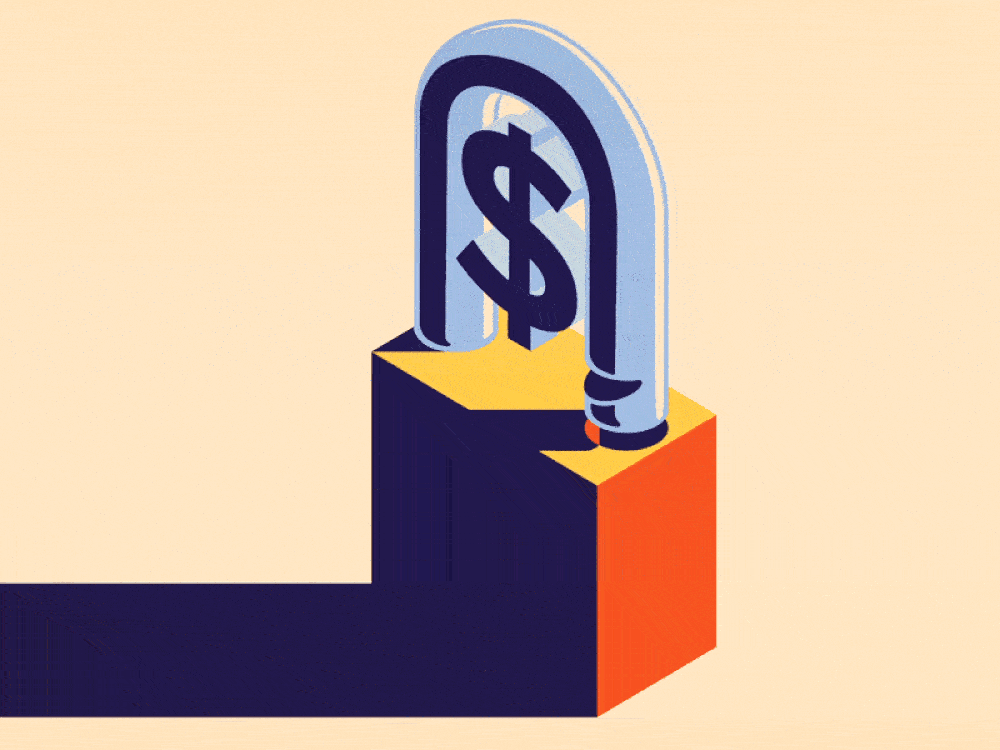SUMMARY
With The RBI Norms Yet To Be Announced, Now Is A Good Time To Assess The Future Of The Burgeoning P2P Lending Industry
On July 3, 2017, it was reported that the Reserve Bank of India (RBI) has finalised the norms for peer to peer lending platforms. The regulations, which will be released this month, are expected to usher in a sea change in the country’s fast-growing fintech landscape. So, will the norms facilitate the expansion of the P2P lending market by attracting serious players into the domain? Or will it impede the industry’s growth by instituting inflexible, stringent laws?
These are but two of the questions that we have attempted to find answers to in this article. The piece aims to offer a glimpse into the future of India’s P2P lending space, which is poised to grow into a $4 Bn-$5 Bn empire by 2023. It is currently home to more than 30 players, including Faircent, LendBox, LenDenClub, IndiaMoneyMart, Monexo, Rupaiya Exchange, LoanBaba, CapZest and i2iFunding. If AnytimeLoan founder Keerthi Kumar Jain’s words are to be believed, the RBI regulations will herald a new age of economic reformation and inclusion in the country. He says,
P2P regulation in India would make India a credit inclusive society, wherein every Indian can access instant credit and those who have better repayment/digital footprints would have better and transparent negotiation power when it comes to cost. It would democratise the entire money circle and give power in the hands of millions of people which, today, is in the hands of a few select corporates/large banks, NBFCs. If P2P is regulated properly, it could transform the entire landscape of our economy in the years to come. It may also emerge as one of the best alternate assets for people.
The Reasoning Behind The RBI Regulations
As discussed in the previous article, “Money Laundering And A $7.6 Bn Scam: A Grim Look At The Dark Side Of P2P Lending,” lack of enforceable regulations was one of the main culprits behind the Ezubao Ponzi scheme in China. The absence of legal accountability provided Ezubao’s senior management with the wherewithal to squander over $7.6 Bn on exorbitant salaries, luxury items, $20 Mn villas, as well as gifts. In the process, more than 900,000 lenders were swindled out of their investment. Similar instances of the scam have also occurred in the US, despite the presence of both federal and state-level regulatory systems.
In the absence of proper regulations, people are often hesitant to use P2P platforms for lending and borrowing. To that end, the RBI has highlighted three main reasons peer-to-peer lending should be regulated in India. In a consultation paper published in April 2016, the central banking institution wrote:
“P2P lending promotes alternative forms of finance, where formal finance is unable to reach and also has the potential to soften the lending rates as a result of lower operational costs and enhanced competition with the traditional lending channels. Therefore, the importance of these methods of financing needs to be acknowledged. If properly regulated, the P2P lending platforms can do this more effectively.”
Given the fast pace at which the sector is expanding, the Indian P2P lending industry will likely have a major impact on traditional banking channels as well as the NBFC space. Keeping that in mind, a robust regulatory and advisory system would help control the sector’s growth in the right direction. The RBI added, “In its nascent stage, this industry has the potential to disrupt the financial sector and throw surprises. A sound regulatory framework will prevent such surprises.”
If left unregulated, the P2P lending industry could potentially fester scams and other unlawful activities that could have disastrous consequences, akin to the 2007-08 real estate crisis in the US. Additionally, the presence of regulations and legally binding guidelines would help build trust among lenders and borrowers about the platforms.

What The RBI Guidelines Entail For P2P Lending
In the 2016 paper, the RBI talked at great length about the risks of money laundering associated with peer-to-peer lending. To minimise these risks, the RBI is looking to cap the interest rates charged by P2P lending companies at the same level as NBFCs and microfinance institutions (MFIs). It also raised concerns regarding the lack of transparency in KYC and loan recovery practices. Since the transactions are all carried out through bank accounts, all KYC-related activities should be conducted by the concerned banks, RBI argued. The paper reads:
“RBI has powers to regulate entities which are in the form of companies or cooperative societies. RBI can issue directions under sections 45JA and 45L of RBI Act to such platforms regarding registration requirements and prudential norms. However, if the P2P platforms are run by individuals, proprietorship, partnership or Limited Liability Partnerships, it would not fall under the purview of RBI.”
The newly-prescribed regulatory framework would encompass the following rules:
To Be Recognised As NBFCs
- Up until now, P2P fintech companies were registered under the Companies Act.
- The new Finance Ministry guidelines, however, recognise these institutions as Non-Banking Financial Companies (NBFCs).
Permitted Activity
- The P2P companies would serve only as intermediaries, responsible for matching lenders and borrowers on the platform. The portal would act as the loan originator, without the lending and borrowing actually getting reflected on its balance sheet.
- The platform will be prohibited from giving any assured return either directly or indirectly. It will, however, be allowed to opine on lender suitability and borrower creditworthiness.
- Advertisements should contain adequate mention of P2P lending regulations.
- The funds will have to move directly from the lender’s bank account to the borrower’s bank account to reduce the threat of money laundering.
- Peer-to-peer lending platforms will also be prohibited from participating in cross-border transactions, under the FEMA guidelines for transactions between residents and nonresidents.
Prudential Requirements
- To ensure that P2P lending platforms have enough “economic skin” in the game, the RBI has mandated a $312K (INR 2 Cr) capital requirement for these companies.
- A leverage ratio could also be prescribed to prevent these platforms from expanding indiscriminately.
- Alternative lending practices are often availed by uninformed lenders looking to gain high returns on investments. In such cases, it would be prudent to have a limit on the maximum contribution any lender can make towards a loan.
Governance Requirements
- This includes a set of criteria for promoters, directors, and the CEO of P2P lending companies. Preference would be give to individuals with a financial sector background.
- Because peer-to-peer platforms run by individuals, proprietorship, partnership or Limited Liability Partnerships would not fall under the purview of the RBI, it is essential that these portals adopt a company structure. As explained by the RBI, “The notification can, therefore, specify that no entity other than a company can undertake this activity. This will render such services provided under any other organisational structure illegal. Alternatively, the other forms of the structure may be regulated by the State Governments.”
- The guidelines may also require the P2P lender to have a brick-and-mortar setup in the country.
Business Continuity Plan (BCP)
- The platforms need to integrate efficient risk management systems to ensure smooth operations.
- A proper backup system for the data needs to be installed since the platform also acts as the custodian of agreements and cheques between lenders and borrowers.
- A Business Continuity Plan (BCP) will allow the company to continue operations, even when the platform itself has failed.
Customer Interface
- Confidentiality of customer data and data security is of paramount importance and should be ensured by the platforms.
- At the same time, transparency in operations and minimum disclosures to borrowers and lenders would also be essential.
- The guidelines prohibit these companies from promising extraordinary returns on investments.
- Some P2P lending platforms offer loan recovery services to lenders in exchange for a specified fee. In this regard, the current regulations applicable to other NBFCs will also be made applicable to these platforms.
- A proper grievance redressal mechanism should be in place to deal with complaints from both lenders and borrowers.
Reporting Requirements
As per the regulations, a P2P lending company will be held accountable for all cases of fraud on its platform. To that end, the guidelines mandate that the platforms need to submit regular reports on their financial position, loans arranged each quarter as well as borrower and lender complaints to the Reserve Bank of India.

How Regulations Will Impact The P2P Lending Community
The guidelines put forward by the RBI are aimed primarily at facilitating growth and expansion of the peer-to-peer lending industry in India. By instating stricter regulations, the central banking institution hopes to promote transparency not just about the process, but also about the methodology involved. This would, in turn, create greater accountability among P2P lending platforms that, until now, served only as intermediaries without any “skin” in the game. The ultimate goal is to steer the market’s growth in the right direction, thereby, offering more opportunities to serious players.
Once instituted, the regulations are expected to impact the burgeoning P2P lending space in the following ways:
More At Stake For P2P Lending Platforms
As intermediaries between lenders and loan seekers, peer-to-peer lending companies have very little at stake, especially in cases of default. This has, in the past, given way to lax credit standards and sloppy verification. With the new RBI regulations, P2P lending platforms will have to commit a minimum capital of $312K (INR 2 Cr).
Given that these platforms do not directly grant loans or accept deposits, raising that kind of capital will be a challenge for smaller players. This inadvertently results in the elimination of frivolous players that are looking only to capitalise on the industry’s burgeoning growth. Serious players, on the other hand, are offered a more streamlined path to success.
Greater Opportunities For Growth
Established players always prefer to enter a sector that is regulated. Although still very young, the P2P lending space in India could benefit greatly from regulations. In addition to mitigating risks and threats of scam, the RBI guidelines could help stabilise the industry’s growth and introduce a standardised system of credit assessment, payments as well as loan recovery. A uniform, well-regulated framework would, therefore, attract more serious players into space, and offer them greater opportunities for growth.
Higher Quality Of Credit
At present, the task of evaluating borrower credit-worthiness is shouldered by P2P lending platforms. Because these companies do not have the resources that are normally available to banks, the platforms currently rely on credit information companies (CIC) – like TransUnion Credit Information Bureau Ltd. (CIBIL), Experian India and Equifax India – for background and credit checking purposes.
In a country inhabited by 1.3 Bn people (as of 2016), not all borrowers are part of the database maintained by credit bureaus. The lack of verifiable data is one of the main reasons P2P lending platforms often fail to ascertain the quality of credit. This usually results in higher loan delinquencies and frauds. With the RBI serving as the chief supervisory body, the platforms will have to maintain more thorough records of the number of disbursed loans as well as the accounts that dishonoured EMIs. This would, in turn, pave the way for the higher quality of credits.
Greater Transparency
According to the guidelines, P2P lending platforms will need to submit regular reports on their financial position, loans arranged each quarter, complaints etc. to the Reserve Bank of India. Up until now, lending companies often withheld important details about the borrowers, be it individuals or businesses. The only information usually available to investors is the industry that the loan-seeking business belongs to. In large ticket-size investments, this becomes a problem, as many lenders would like to conduct their own due diligence on the business they are pouring money into.
In the consultation paper, the RBI has mandated a minimum degree of disclosure on the part of the P2P lending platforms. By making vital information accessible to lenders, these platforms will not only enhance transparency but also foster trust among institutional investors.
Legal Accountability
In the past, P2P lending companies have been known to artificially build volumes by projecting higher disbursals and lower default rates than the actual numbers. Once regulations are imposed, however, the platforms will have to be more diligent when it comes to accurate reporting. Failure to do so could possibly lead to the levying of heavy penalties. In extreme cases of discrepancy, the RBI may take away the business license of the guilty party.

Lower Risks Of Default
So far, scant information about credit history has facilitated the sheltering of defaulting borrowers. Even when a person fails to pay the EMIs on time, his/her credit score remains the same. This is because credit rating bureaus currently do not track data from unorganised sectors like peer-to-peer lending.
The implementation of regulations will help bring alternative lending practices under the purview of mainstream credit bureaus. With a more efficient tracking of borrower behaviour, the task of identifying and penalising defaulters will also become easier. Consequently, the process of loan recovery will also become smoother and more efficient.
Limitations On Fund Transfer
To reduce the threat of money laundering, the RBI is planning to put restrictions on the way funds are transferred between P2P lenders and borrowers. As per the consultation paper, all borrowing-lending transactions will take place via direct bank-to-bank transfers. While such a step will improve transparency and ensure seamless flow of funds, it will make the process of transferring funds more cumbersome.
If a loan is backed by multiple lenders, borrowers will have to send EMIs to the individual accounts of investors. One way of making the process easier and faster is to allow P2P lending platforms to maintain nodal/escrow accounts. If that happens, lenders and borrowers will be able to deposit funds into a bank account held by the platform. Both parties will, therefore, be able to delegate the task of transferring funds to the platform, which will then disburse the right amounts at the right time.
Inflexible Laws Could Impede Growth
Unregulated, indiscriminate growth could lead P2P lending to a collapse similar to the US subprime crisis of 2007-08. To prevent such a catastrophe, the RBI is keen on setting an upper limit on interest rates/charged levied by the lending platforms. As per the RBI consultation paper, putting a cap on the RoI would also lower the chances of the system’s misuse.
However, according to AnytimeLoan founder Keerthi Kumar Jain, the RBI should adopt a scientific approach when deciding what the maximum limit should be. Among the things that should be considered are – risk, the cost of capital, demand and supply as well as the cost of servicing. He explains, “RBI should not intervene on defining rate of interest/charges and leave the same to basic economic principle, wherein demand and supply would take its own course in arriving at a price point that’s conducive for the overall market.”
While regulations will likely help facilitate the industry’s growth, instating laws that are too stringent and inflexible could prove detrimental.
What The Future Of P2P Lending In India Looks Like
In India, the P2P lending market is still very young. Expected to turn into a $4 Bn-$5 Bn industry by 2023, space is home to more than 30 peer-to-peer lending startups specialising in a number of domains, including personal loans, payday loans, student loans, microfinance, consumer loans, and business loans. Players like iLend, Slab, Hedwic, and PeerLend rule the P2P personal loans space. SMECashLoans and SMEBank, on the other hand, deal in commercial loans, while LendSmart provides consumer loans. VoteforEdu is for student loans. AnytimeLoan disburses payday loans at low-interest rates and for short durations.

Image Credit: Yostartups
What’s To Come For P2P Lenders And Borrowers
“There is enormous unmet demand for credit in India. Nearly 80% of borrowers who require a loan do not get serviced today. This captive market along with the increasing customer preference to apply for credit online will enable P2P platforms to service a customer base which is today largely underserviced,” believes Monexo founder Mukesh Bubna.
From the perspective of the borrower, increased availability of smartphones and the Internet has made alternative lending accessible to the masses. In recent years, the launch of India’s digital stack – eKYC, UPI, BHIM – has helped bridge the gap previously left behind by traditional banking institutions. Demonetisation propelled the country’s fledgeling P2P lending industry to the forefront, making the disbursal of unsecured loans easier and more efficient. Additionally, the promise of low-interest rates, as well as less emphasis on credit scores, are some of the other factors that have helped popularise peer-to-peer lending among India’s borrowing community.
As predicted by Bubna, retail investors will fuel the growth of this industry in the coming years. As the market matures, investors will likely turn to P2P lending as an attractive, short-term investment that not only provides stability but also adds value to their portfolio. He adds, “P2P lending, over the next few years, is projected to occupy at least 20% of the investor’s wallet. Large liquidity can also enter the system through institutional investors – lending institutions, hedge funds, etc. – who want to take exposure on a small pie of consumer credit.”
Challenges: Scant Funding And The Problem Of NPAs
For a nuanced and complete understanding of the industry’s potential, one also needs to look at the obstacles that are currently inhibiting its growth. According to OpenTap founder Senthil Natarajan, access to adequate funding and talent could pose some serious challenges in the P2P lending space. He states, “Access to funding will mean that organisations will be able to attract better talent. Au contraire, better talent could be a critical factor in attracting investments/funding.”
Another major challenge that needs to be overcome is the problem of non-performing assets (NPAs). The solution, Natarajan believes, is a rather onerous one. He adds, “To overcome this to a large extent, the platform has to become part of the path of payment flow of loans being funded. Else, it can’t ‘electronify’ (sic) this workflow and ‘automatedly’ (sic) issue payment instructions to the involved banks. In addition, lenders will have to keep track of bank account details of every borrower he/she is dealing with and follow up for repayments. This will render the entire system inefficient.”
Despite the burgeoning digital revolution in India, many sections of the society are still not ready or even equipped to go digital. Forcing such customers onto the path of digital inclusion could be deleterious. For Natarajan, the answer lies in a multi-faceted approach geared towards problem-solving. He says,
“What we are working towards – technology-enabled inclusion, is a (sub) continent-sized opportunity, and the subcontinent is full of other such opportunities. So we take a hybrid approach – solve part of the problem the old-fashioned way through bricks and clicks, rely on feature phones for the rest. With those done, when smartphones wash over the land, it won’t be hard to upgrade the service proposition to use those devices.”
In spite of the challenges and risks, Bubna is optimistic about the future of P2P lending in India. He goes on to say, “Overall, I believe, the industry will continue to grow steadily with platforms competing closely for both lenders and borrowers. Diversified loan product offerings, an established track record of delivering above market returns and the ability to operate with credibility will be important metrics for long-term growth. In 2020, if someone told me that P2P lending has become an INR 20,000 Cr market – I would not be very surprised.”
Editor’s Note
According to estimations by KPMG and the Cambridge Centre for Alternative Finance, the global P2P lending sector currently stands at $130 Bn. Expanding at a rate of 51% per annum, space is poised to grow into a $290 Bn empire by 2020. At the head of the pack is China’s P2P lending industry, which is believed to be worth $103.43 Bn. The US comes second at $32.8 Bn, while the UK is in the third place with an estimated worth of $9.42 Bn.
In the first article of the series, “How Fintech Revolution Is Making Way For A Potential $5 Bn Online P2P Lending Empire In India,” we talked about the different regulatory frameworks in countries around the globe. This, in turn, breeds scams and unscrupulous practices, as can be seen in the case of the $7.6 Bn Ezubao Ponzi scheme in China. In the midst of tightening regulations, one of China’s largest P2P lending companies – Hongling Capital – has recently called it quits, due to poor high loan default rate.
The timely implementation of regulations will not only help bring order to India’s fledgeling P2P lending realm but will also aid in its growth and expansion in the future. By minimising risks and introducing legal accountability, the RBI will also help build trust and confidence among lenders as well as borrowers. Most importantly, the regulations will act as an insurance against future financial disasters. For a multi-billion dollar industry, the future is paved with potholes as well as pinnacles. How the wave crests is what remains to be seen.
The article is part of a series dedicated to the analysis of the P2P lending landscape in India. In the next article, we’ll delve deeper into the Indian P2P lending landscape, focussing on the plethora of startups that have come up in recent years. In doing so, we look to evaluate the impact that peer-to-peer lending has had on the country’s burgeoning fintech revolution.



























